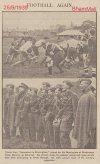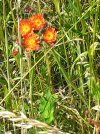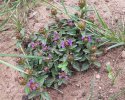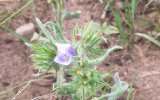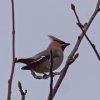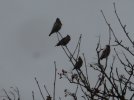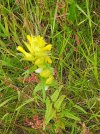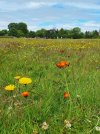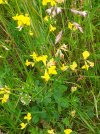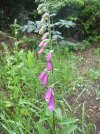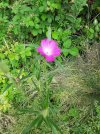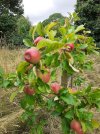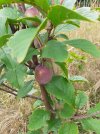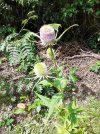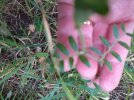-
Welcome to this forum . We are a worldwide group with a common interest in Birmingham and its history. While here, please follow a few simple rules. We ask that you respect other members, thank those who have helped you and please keep your contributions on-topic with the thread.
We do hope you enjoy your visit. BHF Admin Team
You are using an out of date browser. It may not display this or other websites correctly.
You should upgrade or use an alternative browser.
You should upgrade or use an alternative browser.
Windermere Rd Park/ground Saved
- Thread starter Morturn
- Start date
pjmburns
master brummie
James Smerdon is listed as a gardener and on the 1912 e roll lived at "cottage at The Leasowes". By 1920 he was listed on the e roll at Billesley House Lodge on Yardley Wood Road. I don't think Arthur Smerdon was connected to The Leasowes. James is listed as the gardener to A. Heath at The Leasowes. See post #11
I came across this which mentions some of the boys from the school who fought in WWI from page 6 onwards.Has any body heard of wintertsloe boy school in Moseley.
Could it be possible that The Leasowes was turned into flats for several occupants at the same time at a much earlier date?James Smerdon is listed as a gardener and on the 1912 e roll lived at "cottage at The Leasowes". By 1920 he was listed on the e roll at Billesley House Lodge on Yardley Wood Road. I don't think Arthur Smerdon was connected to The Leasowes. James is listed as the gardener to A. Heath at The Leasowes. See post #11
I'm struggling to figure it all out, maybe A. Heath was just a live in landlord for a while? Also, looking at the maps you provided it seems that out of all the houses built post 1967 on the site, there is a much larger older building located today at 160 Wake Green Rd, it appears to be the location of where the lodge was originally, could it possibly be the lodge itself or part of it was? I've taken a real interest, as I used to live in one of the new houses where The Leasowes used to be.
pjmburns
master brummie
Yes you're right about the lodge, just looking on google maps and I can see the lodge would be exactly where the drive is for 162 Wake Green Rd, also 160 appears to be the same building it is now.The house numbered 160 is too large to be a lodge and appears to be the next to where the lodge at the Leasowes is marked on the 1937 map. The red marker is 160.
View attachment 155455
In 1912 A Heath is listed in the rates books as the owner and occupier of The Leasowes + the Lodge (occupied by J Smerdon) + land
pjmburns
master brummie
I posted on the garden thread about watering over on these fields on Tuesday.
 birminghamhistory.co.uk
birminghamhistory.co.uk
Great excitement today as a group of 5 or 6 buzzards (so I am reliably informed) were circling overhead. Too high for a photo but could hear their cries.
Part of the field has been left for the grass to grow long as a meadow so not sure what wildlife they might have spotted.
In the garden 2022
.....i got up today at 5 to go for a walk and there was a car and a tent on my front lawn. i shook the tent,and said this is private land move it move move it. when i come back from the walk they had gone CHEAKY tourists.:(
 birminghamhistory.co.uk
birminghamhistory.co.uk
Great excitement today as a group of 5 or 6 buzzards (so I am reliably informed) were circling overhead. Too high for a photo but could hear their cries.
Part of the field has been left for the grass to grow long as a meadow so not sure what wildlife they might have spotted.
Last edited:
pjmburns
master brummie
Thought I would post this item on this thread.
Birmingham's Chelsea Show entry celebrates the green spaces and parks in Birmingham. Each park was asked to submit photos of their use of the space - Windermere Fields submitted some - I don't know how the ideas were shown but.... Brmingham has won an 11th consecutive Gold Medal.
 www.birmingham.gov.uk
www.birmingham.gov.uk
Birmingham's Chelsea Show entry celebrates the green spaces and parks in Birmingham. Each park was asked to submit photos of their use of the space - Windermere Fields submitted some - I don't know how the ideas were shown but.... Brmingham has won an 11th consecutive Gold Medal.
Birmingham wins an eleventh consecutive Chelsea Flower Show gold medal award | Birmingham City Council
Birmingham wins an eleventh consecutive Chelsea Flower Show gold medal award - An eleventh consecutive gold medal for horticultural excellence has been earned by the city council at this year’s RHS Chelsea Flower Show.
That's lovely Janice that they've celebrated the history of Birmingham parks. I like the metal tulips, and how appropriate that it will be reassembled in Cannon Hill Park. Viv
pjmburns
master brummie
I originally posted on the garden thread last year about the work being done by volunteers on these fields.
I thought some of you might like to see evidence of the work done on the "saved" fields. Last year we created 5 wildflower beds and earlier this year we sowed a seed mix of flowers designed to attract insects and butterflies.
When I took these this morning our "expert" wasn't there so I don't know the names of all of them. I love the orange hawkweed - that one was actually a self seed in among the longest meadow grass but we do have it in the wildflower beds as well. It has another name which I think is lovely - fox and cubs.
I thought some of you might like to see evidence of the work done on the "saved" fields. Last year we created 5 wildflower beds and earlier this year we sowed a seed mix of flowers designed to attract insects and butterflies.
When I took these this morning our "expert" wasn't there so I don't know the names of all of them. I love the orange hawkweed - that one was actually a self seed in among the longest meadow grass but we do have it in the wildflower beds as well. It has another name which I think is lovely - fox and cubs.
Attachments
spendid work jan ....keep up the good workI originally posted on the garden thread last year about the work being done by volunteers on these fields.
I thought some of you might like to see evidence of the work done on the "saved" fields. Last year we created 5 wildflower beds and earlier this year we sowed a seed mix of flowers designed to attract insects and butterflies.
When I took these this morning our "expert" wasn't there so I don't know the names of all of them. I love the orange hawkweed - that one was actually a self seed in among the longest meadow grass but we do have it in the wildflower beds as well. It has another name which I think is lovely - fox and cubs.
lyn
pjmburns
master brummie
We have winter visitors - bringing human vsitors as well.
Every so often at this time of year we are graced with a small flock of waxwings.
I can't take credit for the photo of the single bird but did have permission to post the photo.
Every so often at this time of year we are graced with a small flock of waxwings.
I can't take credit for the photo of the single bird but did have permission to post the photo.
Attachments
Last edited:
pjmburns
master brummie
Back by lunchtime. The photo of the group was taken at 12.20 today. They keep flying off and returning. Been quite a number of walkers arriving to see them.I saw them too, but they have move on now and were gone this morning.
what a treat jan...keep your eyes open thanks for the photosWe have winter visitors - bringing human vsitors as well.
Every so often at this time of year we are graced with a small flock of waxwings.
I can't take credit for the photo of the single bird but did have permission to post the photo.
lyn
pjmburns
master brummie
At the risk of boring people but on a happier note:
Photos of flowers and fruit taken over the last few weeks.
Apples have had to be thinned out so they can grow to a decent size.
Anyone tried medlar? You have to let the fruit start to rot before it can be eaten apparently.
Photos of flowers and fruit taken over the last few weeks.
Apples have had to be thinned out so they can grow to a decent size.
Anyone tried medlar? You have to let the fruit start to rot before it can be eaten apparently.
Attachments
pjmburns
master brummie
Thanks - we could do with more volunteers though. Lots of followers on Facebook, lots of positive feedback from dog walkers but... we have a small handful who do the work.
Following Birmingham Council cuts we now have no Ranger so we are working on our own. The council men mow the football pitch and will mow the meadows in September but we will have to let seeds drop and then rake up the hay to use as mulch.
Enjoyable thought and nice to think we are creating a legacy.
Will try to get photos of the saplings we planted when the grass round them dries out a bit.
Following Birmingham Council cuts we now have no Ranger so we are working on our own. The council men mow the football pitch and will mow the meadows in September but we will have to let seeds drop and then rake up the hay to use as mulch.
Enjoyable thought and nice to think we are creating a legacy.
Will try to get photos of the saplings we planted when the grass round them dries out a bit.
Thanks - we could do with more volunteers though. Lots of followers on Facebook, lots of positive feedback from dog walkers but... we have a small handful who do the work.
Following Birmingham Council cuts we now have no Ranger so we are working on our own. The council men mow the football pitch and will mow the meadows in September but we will have to let seeds drop and then rake up the hay to use as mulch.
Enjoyable thought and nice to think we are creating a legacy.
Will try to get photos of the saplings we planted when the grass round them dries out a bit.
jan you know if i lived closer i would join ranks even though i cant really do much physical work now im sure i could manage a few cans of water ...hopefully you will get a few more volunteers
lyn
pjmburns
master brummie
Last week was a dramatic week. 2 days with trail bikes up and down the field (3 hrs each day) - police eventually turned up on the second night after several calls to 101 and 999. Friday night found a camper at the bottom end of the field - they left place tidy and went on Saturday.
It was nice yesterday to get back to a gardening session.
Apples and plums in the orchard.
We cut back, carefully, the grass in an area by wild roses (planted earlier this year so not expecting many flowers) and found speedwell in flower and vetch growing - a nice surprise. (Vetch photo a bit blurred as I had to work camera one handed ) Teasel also doing well.
) Teasel also doing well.
I like to think of this as adding to the past and creating history for the future since, hopefully, these trees etc will be there long after we are all gone.
It was nice yesterday to get back to a gardening session.
Apples and plums in the orchard.
We cut back, carefully, the grass in an area by wild roses (planted earlier this year so not expecting many flowers) and found speedwell in flower and vetch growing - a nice surprise. (Vetch photo a bit blurred as I had to work camera one handed
I like to think of this as adding to the past and creating history for the future since, hopefully, these trees etc will be there long after we are all gone.
Attachments
The fruit looks very healthy Janice.



